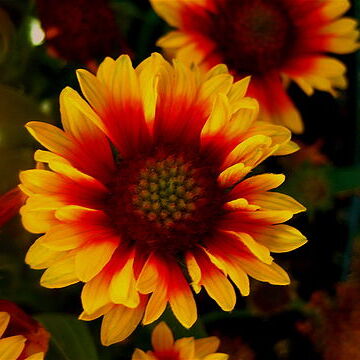Annual or perennial herbs. Stems unbranched to strongly branched, tomentose. Leaves simple, alternate, entire, toothed or pinnatifid. Inflorescences solitary on long peduncles, tomentose. Capitula heterogamous; involucral bracts multiseriate, acute to acuminate, reflexed in fruit; receptacle bearing numerous stiff setae. Ray florets often sterile; ligules showy, yellow, red or purple or combinations of these. Disc florets bisexual, yellow to red or purple; anthers not caudate at base; style branches long, tapered, glabrous or hairy. Achenes obpyramidal, with dense antrorse hairs near base or throughout. Pappus persistent, of 5–10 scales, often aristate.
Annual or perennial herbs. Lvs alternate or all basal, simple, entire to 1-pinnatifid. Capitula pedunculate, solitary. Involucral bracts in 2-3 rows, foliaceous. Receptacle convex to subglobose, usually with numerous setae not subtending individual florets, sometimes glabrous. Outer florets usually sterile, sometimes ♀, ligulate, yellow, orange, or partly or wholly red or purple. Inner florets ☿, tubular, rarely all florets tubular and ligules 0. Achenes all similar, not compressed, 4-angled, narrowed to base, covered in long hairs; pappus of 5-10, often aristate scales.
mentions “spp. and vars.” of this American genus cultivated on Zanzibar and Pemba, but does not specify taxa.

